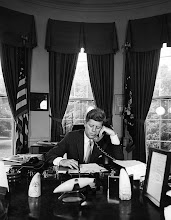Welcome APUSH'ers
Hello AP US History Students of the Summer 2014e,
Many of you are aware that something happened to the blog and posting was disabled. I only just was able to correct the problems with Google this weekend. I have a How to to help those who haven't posted anything, or just need to submit your final comment. Please do so as soon as you can. Deadlines will be extended to Tuesday, August 19th at 10 pm for all the Summer Blog deadlines.
You can access the Help Sheet by Clicking Here.
You need to post comments three different times for your Summer Reading.
Every time you post, you must include your first and last name-- every time you post (get the idea that your name is important?). Without a name, grades cannot be assigned. Keep in mind that we do not know you by name other than from the legal roster, please put any given names not used in parenthesis).
It is IMPORTANT that you use the username and password included in your Summer Reading packet. (username: mcapush2 password: historyrules)
Many of you are aware that something happened to the blog and posting was disabled. I only just was able to correct the problems with Google this weekend. I have a How to to help those who haven't posted anything, or just need to submit your final comment. Please do so as soon as you can. Deadlines will be extended to Tuesday, August 19th at 10 pm for all the Summer Blog deadlines.
You can access the Help Sheet by Clicking Here.
You need to post comments three different times for your Summer Reading.
Every time you post, you must include your first and last name-- every time you post (get the idea that your name is important?). Without a name, grades cannot be assigned. Keep in mind that we do not know you by name other than from the legal roster, please put any given names not used in parenthesis).
It is IMPORTANT that you use the username and password included in your Summer Reading packet. (username: mcapush2 password: historyrules)
Wednesday, July 29, 2009
Michael Johns
Being an Environmentalist, I naturally gravitated towards Silent Spring by Rachel Carson. So far, this book is incredibly interesting. It is, as it says on the cover, "the book that launched the environmental movement." Focusing on the use of pesticides, herbicides, and other poisons used in the second half of the 20th century, it explains how they came into use, their popularity, and the unseen, unintended consequences. It goes deep into the chemistry aspect of these toxins, as well, making it very intriguing to the chemist in me. Also, she brings in many negative events that happened due to the use of these chemicals. One of which describes two small children who use an empty pesticide bag dropped by a plane to fix a tire swing. One child died and the other child went brain dead. All of the amazing, frightful, and eyeopening descriptions in this book shows the great consequences of pesticides, and how humans are part of nature, not separate entities.
Subscribe to:
Post Comments (Atom)




No comments:
Post a Comment